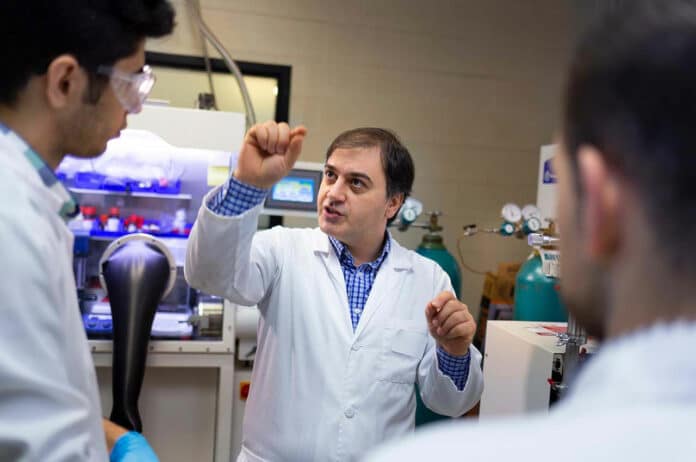The future of electric vehicles depends to a large extent on how fast the development of EV batteries goes. Lithium-ion batteries are the most popular forms of energy storage in the world, but new research into Li-air batteries could make them obsolete.
Scientists at the Illinois Institute of Technology say they have found the winning formula for commercially viable Li-air batteries.
The new battery design has the potential to store one kilowatt-hour per kilogram or higher. This is four times greater than lithium-ion battery technology.
The team led by assistant professor of chemical engineering Mohammad Asadi has pioneered a new electrolyte, combining polymer and ceramic. These are the two most common solid electrolytes, but both of which have downsides. Combining them offers the best solution, with ceramic’s high ionic conductivity and the high stability and high interfacial connection of the polymer.
The resulting ceramic-polyethylene oxide-based composite solid electrolyte allows the for the critical reversible reaction that enables the battery to function – lithium-dioxide formation and decomposition – to occur at high rates at room temperature, a first in a lithium-air battery.
The insights will allow the team to further optimize the battery design, potentially reaching ultra-high power densities far beyond current lithium-ion technology.
“We found that solid-state electrolyte contributes around 75 percent of the total energy density. That tells us there is a lot of room for improvement because we believe we can minimize that thickness without compromising performance, and that would allow us to achieve a very, very high energy density,” says Asadi.
According to a paper published in the journal Science, the new battery is rechargeable for 1000 cycles with a low polarization gap and can operate at high rates. This would be transformative for electrifying transportation, especially heavy-duty vehicles such as airplanes, trains, and submarines.
Asadi and his team now plan to work with industry partners as he now moves toward optimizing the battery design and engineering it for manufacturing.
“The technology is a breakthrough, and it has opened up a big window of possibility for taking these technologies to the market,” says Asadi.
Journal reference:
- Alireza Kondori, Mohammadreza Esmaeilirad, Ahmad Mosen Harzandi, Rachid Amine, Mahmoud Tamadoni Saray, Lei Yu, Tongchao Liu, Jianguo Wen, Nannan Shan, Hsien-Hau Wang, Anh T. Ngo, Paul C. Redfern, Christopher S. Johnson, Khalil Amine, Reza Shahbazian-Yassar, Larry A. Curtiss, Mohammad Asadi. A room-temperature rechargeable Li2O-based lithium-air battery enabled by a solid electrolyte. Science, 2023; DOI: 10.1126/science.abq1347
